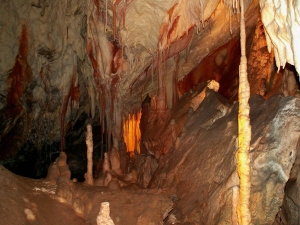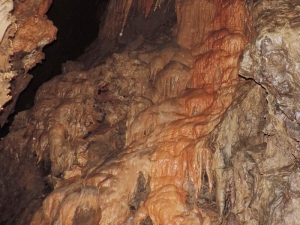UNESCO Natural Heritage in Slovakia

UNESCO Natural Heritage in Slovakia - overview
Caves of the Slovak Karst - list
Primeval Beech Forests of the Carpathians - list
UNESCO Natural Heritage in Slovakia - overview
(list of sites you can find below)
1. Caves of Aggtelek Karst and Slovak Karst
The caves of the Aggtelek Karst and Slovak Karst stand out for their large number of complex, diverse and relatively intact caves concentrated in a small area. This exceptional group of 712 caves (recorded at the time of registration) is located on the northeastern border of Hungary and southeastern Slovakia and lies under a protected area. More than 1000 caves are known today.
Karst processes have created a rich variety of structures and habitats that are important from a biological, geological and paleontological point of view. This area was formed over tens of millions of years and provides an excellent example of karst formation during both tropical and glacial climates, which is very unusual and probably better documented here than anywhere else in the world.
In the territory of Slovakia, these are the Slovak Karst Caves and the Domica cave, which is part of the Baradla - Domica cave system
In 2000, the Dobšinská Ice Cave was added to the original project.
Selected sites on the territory of Slovakia
1.1 Domica
1.2 Boar Abyss (Diviačia priepasť)
1.3 Drienovská Cave (Drienovská jaskyňa)
1.4 Hrušovská Cave (Hrušovská jaskyňa)
1.5 Jasovská Cave (Jasovská jaskyňa)
1.6 Cave System Gombasek Cave - Silická ľadnica
Gombasek Cave
Silická ľadnica Cave
1.7 Cave System Skalistý potok - Kunia Abyss
Skalistý potok Cave (Jaskyňa Skalistého potoka)
Kunia Abyss (Kunia priepasť)
1.8 Krásnohorská Cave (Krásnohorská jaskyňa)
1.9 Ochtinská Aragonite Cave (Ochtinská aragonitová jaskyňa)
1.10 Obrovská Abyss (Obrovská priepasť)
1.11 Snežná diera Abyss (Snežná diera)
1.12 Zvonivá diera Abyss (Zvonivá diera)
1.13 Dobšinská ice cave (Dobšinská ľadová jaskyňa)
The Dobšinská ice cave was included in the original project in 2000
2. Ancient and Primeval Beech Forests of the Carpathians and Other Regions of Europe
The territory was declared a UNESCO World Natural Heritage Site in 2007 as part of the UNESCO World Heritage Site under the name Primeval Beech Forests of the Carpathians (4 components - sites in Slovakia and 6 in Ukraine) . In 2011, the list of territories was extended by five old German forests under name Primeval Beech Forests of the Carpathians and Ancient Beech Forests of Germany. In 2017, the list was expanded by 63 locations in selected European countries and its name is now Ancient and Primeval Beech Forests of the Carpathians and Other Regions of Europe.
On the territory of Slovakia, these are the Carpathian beech forests in the Poloniny National Park in the Bukovec Mountains (Bukovské vrchy) and in the Vihorlat Protected Landscape Area (Chránená krajinná oblasť Vihorlat) in the Vihorlat Mountains (Vihorlatské vrchy). Four sites from Slovakia were entered into the UNESCO World Heritage List - three sites in the Poloniny National Park (Havešová, Rožok and Stužica) and one site in the Vihorlat Protected Landscape Area - entered in the list with name Vihorlat.
Carpathian beech forests in the Poloniny National Park in the Bukovec Mountains
The mountainous area is located in the Poloniny National Park in the east of Slovakia, in an area that is part of the most densely forested areas in Slovakia. More than eighty percent of its area is occupied by forest. European beech dominates here. Pure beech stands predominate, only a small part of the national park area is covered by habitats with fir-beech stands or mixed stands with other deciduous trees.
3 sites are part of the world heritage:
Havešová
Rožok
Stužica
Vihorlat protected landscape area in Vihorlat Mountains
The Vihorlat protected landscape area is located in the Vihorlat Hills - a volcanic mountain range in eastern Slovakia. The beech forests there are characterized by the absence of spruce and fir. They are an example of primary beech forests with a significantly variable diameter and height structure. The Morské oko lake is located in the central part of this area. The site was included in the World Heritage List as Vihorlat.
Source: UNESCO World Heritage Convention














